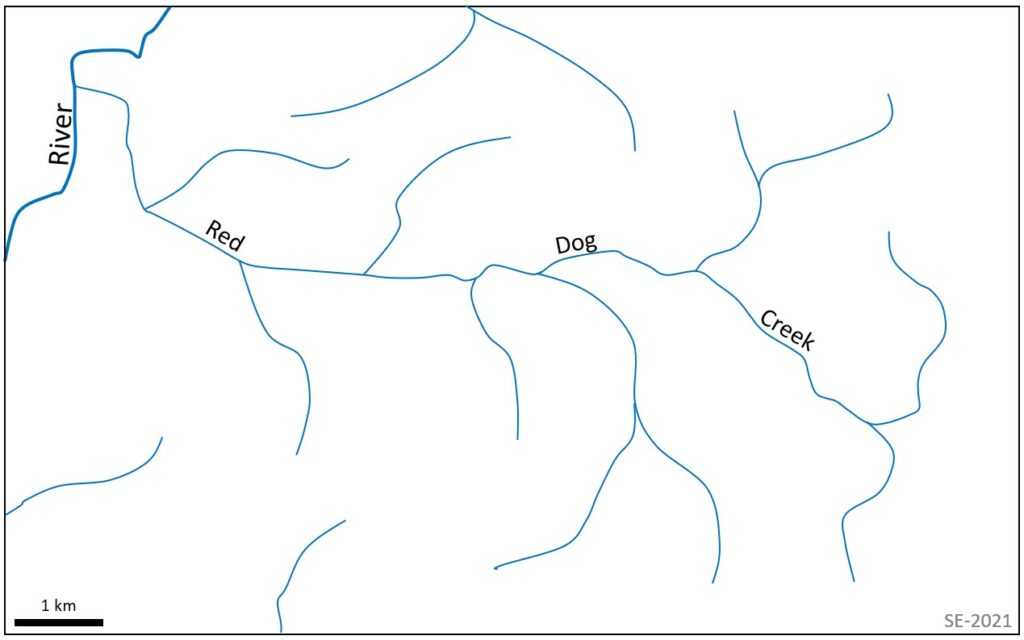Chapter 11 Summary and Questions for Review
Steve Earle
The topics covered in this chapter can be summarized as follows:
| 11.1 The Hydrologic Cycle | Water is constantly being moved from one place to another on Earth, and that motion is powered by the sun and gravity. The important reservoirs of the cycle are the oceans, glaciers, groundwater, lakes and streams and the atmosphere. We can extract water from the hydrologic cycle for our use, but we must be careful to ensure that has only minimal effects on other parts of the cycle. |
| 11.2 Anthropogenic Effects on Water Quality | Agriculture is the main human activity that can negatively affect the quality of surface water and groundwater. These effects can include addition of pesticides and fertilizers, and contribution to elevated turbidity levels. Leakage from chemical storage tanks (including fuel tanks at gas stations) is another significant contributor to water pollution. |
| 11.3 Natural Effects on Water Quality | Groundwater is in close contact with rock or sediment, and can naturally be chemically affected by those materials. Some of the problematic issues with water chemistry include elevated levels of hardness, iron, fluoride and arsenic. In areas near to the ocean groundwater can also become contaminated with salt. One of the key issues with surface water is an elevated level of suspended matter, which can be a problem as it inhibits disinfection measures. |
| 11.4 Groundwater | The water stored within the materials beneath us is groundwater. It represents a much larger source of water than surface water, and it forms the basis of the hydrologic cycle. An aquifer is a body of rock or sediment that is porous–so that it has some room for water storage–and permeable–so that water will flow through it. The rate of that flow will depend on the hydraulic gradient and the permeability. There is continuous exchange between surface water and groundwater. |
| 11.5 Streams and Stream Flow | Water flowing through a channel at surface is a stream, and a drainage basin is the area within which all of the water eventually flows into a main stream. Stream flow varies through a year depending on rates of evapotranspiration, precipitation and melting. It is important to understand those variations if we intend to use a stream as a source of water |
Review Questions for Chapter 11
Answers for the review questions can be found in Appendix 1.
- What is the largest reservoir of fresh water on Earth?
- Draw the outline of the drainage basin of Red Dog Creek on the diagram below.

(Steven Earle, CC BY 4.0) - A lake with an area of 310 km2 and a volume of 13 km3 has an outflow stream with a discharge of 8 m3/s during the lowest-flow part of the year. If there is a requirement to leave 75% of the flow for down-stream users and ecosystems, what rate of water extraction from the lake could be sustained (in m3/s)?
- Explain why a silt deposit with a porosity of 25% is likely to have a lower permeability than a coarse sand deposit with a similar porosity.
- Describe how a well in a confined aquifer can be artesian.
- Two wells in the same aquifer are 180 m apart. The water level elevation in well A is 54 m while that in well B is 45 m. If the aquifer has a permeability of 10-5 m/s and a porosity of 20%, what is the likely flow rate of water in the aquifer in the area between wells A and B?
- Most dissolved constituents are present at higher levels in groundwater than in surface water. Why is that typically the case?
- The following data represent water samples from wells A and B in question 6. Which well has the hardest water?
A: 60 mg/L Cl–, 100 mg/L Na+, 55 mg/L Ca2+, 8 mg/L Mg2+, and pH 7.2
B: 95 mg/L Cl–, 160 mg/L Na+, 30 mg/L Ca2+, 12 mg/L Mg2+, and pH 8.7 - Based on Figure 11.4.4 and the related text, predict which of the samples from question 8 is likely to have the highest fluoride level.
- Why is turbidity a problem for drinking water supplies?
- Explain how the use of agricultural fertilizers can lead to problems for the water quality in nearby lakes.
- Describe how a leaking underground fuel tank can lead to several different groundwater contamination problems.
